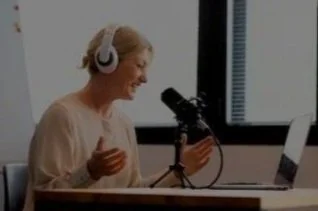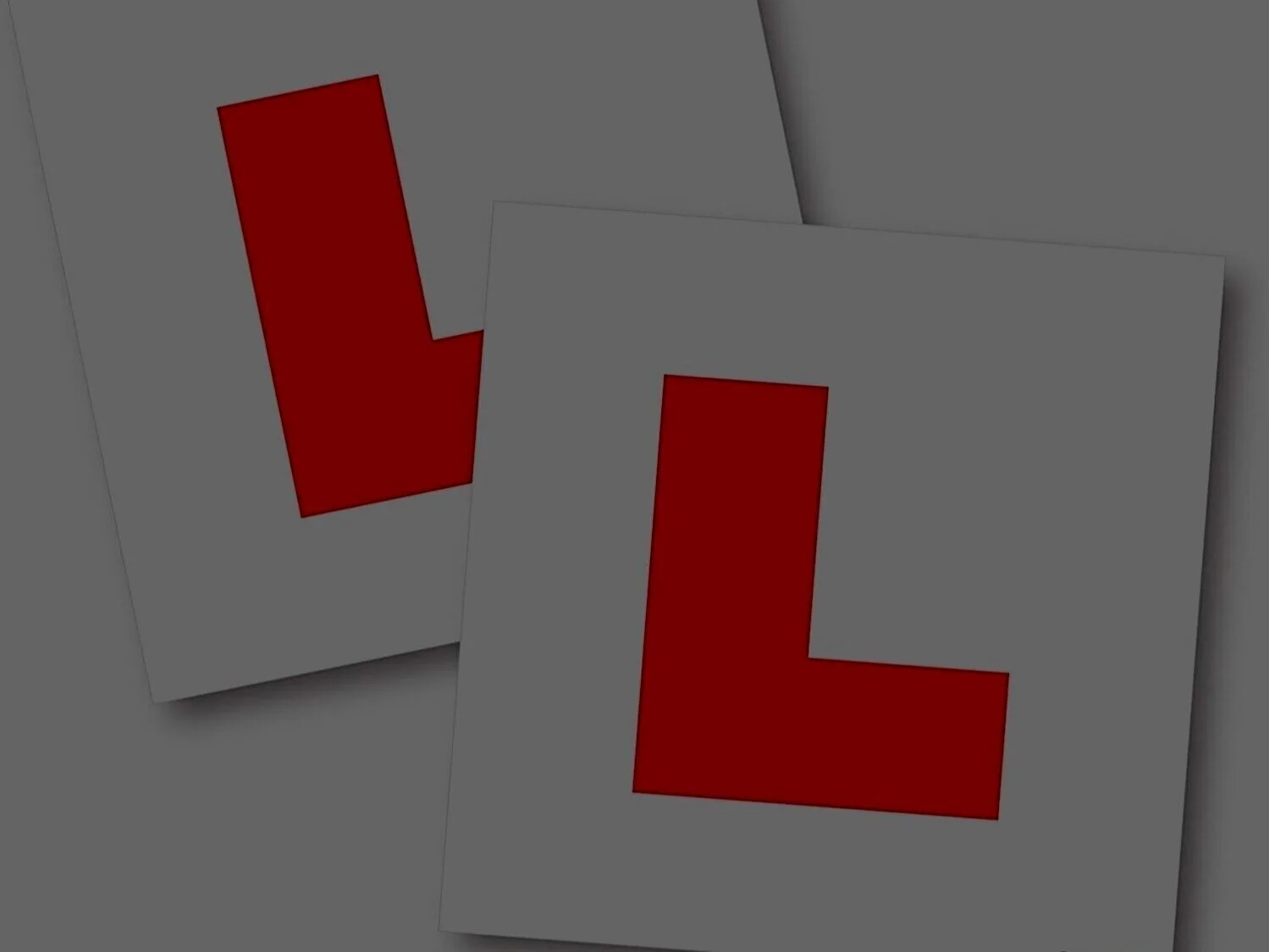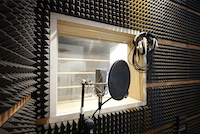




welcome to soho vocal tuition
Learn the vocal technique used by Michael Jackson, Stevie Wonder, Madonna, Barbra Streisand, Prince and over 135 Grammy Award winners.
Soho Vocal Tuition is home to some of the UK’s best vocal coaches. We have worked with some of the best singers in the industry
we’ve worked with
Grammy-winning recording artists
Platinum-selling artists and songwriters
#1 selling artists
BRIT nominees
Mercury Prize nominated artists
Glastonbury artists
X-Factor finalists
West End theatre stars
Actors, rappers, and countless beginners.
“Thank you for all the lessons. Whatever you’re doing definitely works!
Tour went very well and I was very pleased with my singing, better than ever. Even easier than the last time we played Vegas. ”
our expertise
We specialise in private singing lessons, for singers of all levels. We are trained in the world-renowned 'Speech Level Singing' vocal technique, one of the most highly-regarded and proven vocal techniques in the world.
HOLISTIC APPROACH
Singers, like all humans, are complex. We provide a holistic view of vocal coaching - the artistry and performance, vocal science, body & mind interaction, vocal health, vocal technique and exercises.
OUR FOCUS
Posture, breathing (‘support’)
Resonance, vocal registers (sensation of sound vibration), mouth/vowel shape, larynx
Muscle memory, vocal efficiency
Emotion and performance
WOULD YOU LIKE TO...
Reduce vocal tension
Remove cracks or breathiness
Find your 'mix' or 'middle' voice
Learn to ‘belt’
Increase strength, power and range
Improve tone and control
Improve breathing technique (or 'support') and posture
Become a confident singer
Develop emotion and delivery in songs
Improve flexibility and speed for riffs and runs
Prepare for auditions, recording sessions or singing exams
We work with...
PROFESSIONAL recording artists & stage performers -needing help preparing for recording sessions, tours, auditions or nightly performances
INTERMEDIATE or SEMI-PRO singers - fine-tune vocal technique, control and expression
BEGINNERS - learn the basics of singing and start to express themselves better
TRANSGENDER & INTERSEX singers - improve control, join up vocal registers,
ACTORS - needing to add to their skill-set
RAPPERS - who need help with projection and pitching whilst rapping/half-singing/full singing
MUSIC and DRAMA STUDENTS - wanting to get more specific assistance with their voice

world-class technique
Trusted by Grammy winners, #1 and Platinum selling artists, West End theatre stars, BRIT nominees, X-Factor finalists.
Trained in the world-renowned 'Speech Level Singing' vocal technique, one of the most highly regarded vocal techniques.
VOCAL diagnosis
Current vocal habits are ‘diagnosed’ using specific vocal exercises, and your vocal history and goals are discussed.
Tailored exercises to help target and fix your problem areas, just like a personal trainer or sports coach for the voice.
quick results
The latest vocal science allows us to fix voices more quickly and efficiently. Tailored exercises address your vocal issues fast.
A holistic view means nothing is omitted - body & mind, anatomy & health, vocal science, artistry.
EVERY voice
We work with every voice - big, small, male, female, non-binary.
And we have have years of experience so we understand the differences and similarities.
We each teach between 1,000-1,500 lessons, every year.
simple explanationS
We understand the technical stuff so you don’t have to.
We understand how every voice works from a functional and anatomical level - the science behind the artistry.
You could get by with 4 words: larynx, vocal-cords, resonance, diaphragm.
Keep your uniqueness
You can keep the good bits; we’ll help you fix the bad habits.
We won’t change your unique vocal style either…unless you ask us to.
Our aim is to give you control - and make you sound like you never actually needed a lesson. If you want the rasp or the crack, you can keep it.
INDEPENDENT BUSINESSES
Ed and Anna operate independently as separate businesses, so your lesson booking and payment is made with your chosen teacher via the Booking section of this website.
“Having lessons with Ed and can’t express how great he is. Really well structured lessons and amazing understanding of how the voice works.”
“I can’t recommend Anna highly enough.”

what happens in a singing lesson
The tried and tested way of improving singer’s voices in the shortest time.
CHAT: We chat to find out your specific singing goals and objectives, or any vocal problems. (2 mins)
DIAGNOSTICS: You sing a few simple scales so we can hear your voice, then we can identify what do well and what you need help with. (2 mins)
EXERCISES: We give you some carefully chosen exercises to change your bad habits. It’s always easier to fix a voice using carefully-chosen exercises rather than during a song, especially when you’re starting out. (25 mins)
SINGING A SONG (aka ‘Application of technique into song’): You keep the same technique from the exercises into the song. (25 mins)
SUMMARY: Lesson summary, homework, book next lesson. (1 min)
NB - Once the technique is improved, it’s easier to add emotion. Poor technique prevents singers from expressing themselves fully.
Fast-Tracked Progress
We tailor the lesson to exactly what you and your voice needs.
We do NOT use the same generic warm-up routines for everyone.
This means the exercises used in your lesson work the quickest for you, and this ensures your progress is as fast as possible.
This also means we can also take into account other factors - e.g. your previous singing experience, your musical background, your confidence, how fast the lesson moves forward, etc.
We work with you to help you develop your voice in the same way a personal trainer might to help you get fit. Within each vocal lesson, we develop the muscle memory of your voice (and the vocal muscles) - both coordination and strength - so you have a better, more reliable voice.

how much are lessons?
Please see the Prices section
What is my first lesson like?
See the ‘What Happens In A Singing Lesson’ section above
Do you work with beginners?
Yes, very definitely. Even those who think they are ‘tone-deaf’. In fact, the term ‘tone-deaf’ is generally misused. It’s rarely your ears that are the problem, it’s your voice. You can probably hear the right notes, you just can’t sing them. Your vocal muscles need training and coordinating properly. That’s where we can help!
HOW MUCH DO I NEED TO PRACTISE?
How good do you want to be, or how quickly do you want to get there? There may be someone else ahead of you practising more than you!
Like learning anything - languages, sports, dancing, etc - you will improve more by immersing yourself in your new habits as much as possible, and as soon as possible. Then you will be able to decrease their regularity but still remember the new habit. Crash courses are great, but are useless if you don't practise. Practise is the most important aspect in learning anything...aside from a good teacher! :-)
how many lesson will i need?
The million dollar question. How long is a piece of string? (Google that if you’re not familiar with UK phrases!)
The answer varies a lot.
6 lessons would give you a good introduction to your voice, help you identify your current habits, give you some exercises to start to fix them, and what to look for with your own practise.
The more lessons you have, the better your technique becomes and the more ingrained your new technique becomes, so you don’t forget your imopressive new voice. This is the same as learning any other skill - sports, languages, dancing, etc.
Factors affecting Number of Lessons:
Your starting point - beginner, intermediate or professional; any lessons before?
Your envisioned ‘end goal’. What is ‘good enough’ - Beyonce / Michael Jackson, or punk singer?
How OFTEN you practise - quantity
How WELL you practise - quality
What else you done have before - good and bad. Are you a musician, bilingual, a focused sports-person? Are you eager to learn?
What else you do to improve your voice - e.g. healthy lifestyle, good sleep/hydration, further reading? What do you do to negatively affect your voice - bad sleep, shouting, dehydration, smoking, etc.
Some students practice every day and come back each week with questions, comments and observations from other things that they’ve learnt. Other students don’t have the time or space to practise, or they just forget or de-prioritise it.
It’s also VERY IMPORTANT too add: no one needs to be a perfect singer (not that perfection exists anyway)! You only need have a sustainable voice that is good enough for your genre. Plus, different genres have different thresholds of perfection. Opera = nearly perfect. Punk = very imperfect. Most contemporary popular music is somewhere in between.
Do you teach style too?
Yes, of course - it's one of the most important and best bits of singing - the emotion, the dynamics (loud/soft, happy/sad). However, it's usually better to work on style after the general technique has been improved, then you can stylise more or more easily. Importantly, we aren't suggesting anyone should 'over-train' their voice though, otherwise they might sound really boring and lose all style or individuality!
Do you work with rappers?
Yes, we can. The half-sung/half-rapped (‘Drake-style’) is more obviously workable - but we can also help with ‘regular’ rapping on things like your projection, pitching options and on maintaining an easy, healthy voice.
Should i bring sheet music?
Not essential. You can do if you have some. Check with your teacher, particularly if it's complicated to play. You can definitely bring lyrics or a chord chart, especially if your song is unusual or hard to find. Otherwise, we can print off lyrics or chords or music, as necessary.
We also have Spotify, either for reference or if you would prefer to use a backing track.
DO I need to read music?
No. The scales we use for the vocal exercises are simple and can be learnt by ear.
The same is true for singing your song, which can also be learnt by ear and with lyrics. (You can use sheet music if you wish, of course.) Most students sing along with the original artist to start with, then progress to your teacher playing the piano or guitar, whilst the student sings along. This is where we apply the technique learnt from the exercises into the song.
Can I bring my own backing-track?
Yes, especially if it is an original track.
CAN I RECORD MY LESSON?
Absolutely, yes - we recommend that you do. Most smart phones have a record or voice-memo function, or you can buy a portable digital recorder quite cheaply. The quality on smartphones is usually good enough to act as a reminder and for you to hear the progression in your voice.
What technique do we teach?
All of our teachers were trained in Speech Level Singing (SLS), one of the most highly-regarded vocal techniques in the world, used by singers such as Michael Jackson, Stevie Wonder, Madonna, Barbra Streisand, Prince, Liza Minelli and over 135 Grammy Award winners.
SHOULD I PREPARE A SONG?
You can do but it's not essential. Certainly don't try and perfect your song, as that's what we can especially help you with. You can also use lyrics as a guide.
Do we offer discounts?
Yes, a 10% discount is available for 6 lesson paid for in advance. Lesson times and dates can vary and don't necessarily need to be booked in advance, only paid for.
Do you offer group lessons?
Not at the moment, sorry.
WHat about the guy online talking about SLS?
Maybe he doesn’t think Stevie Wonder or Michael Jackson or Barbra Streisand or Prince or Chester Bennington are very good singers! Here’s a list of SLS singers. Or maybe he’s confused Speech Level Singing with speech therapy. Or maybe just saw a rubbish SLS teacher or someone claiming to teach SLS. He seems confused about it anyway.
SLS is a singing technique that was precisely designed (by singers) to help singers sing more easily and more strongly, without any strain or cracking. That's why so many top singers still study and use it, and why so many modern vocal techniques are based on it.
Admittedly it has a somewhat misleading name, but it is only meant to suggest that singing is much closer to speech than it is to shouting or falsetto. The larynx should stay more or less neutral and stable - not tight, not raised all the way up, and not all the way down.
Yes, sometimes the larynx does, can and should move - but not so much movement that it adversely affects the ‘ease of production’, or gives an unwanted or unexpected tone (e.g. screechy, or hollow) - though sometimes these sounds are desirable.
Singing and speaking use exactly the same parts of the body, in very similar ways. A large part of what SLS does is to help singers stop shouting whilst they sing. Once they've done this, they can increase the volume, support, intensity, rasp, etc, but not before or too soon, otherwise they go back to shouting!
1. We definitely do teach support.
2. We do teach the bright tone necesary for singing and projecting. 'Bratty NAY', for example.
3. We teach better bridging not 'early bridging'. This may be earlier than if someone is bridging late, which is often the cause of vocal strain. We do not teach vocal strain. We helps singers find and improve the 'middle voice' by coordinating the vocal muscles better. Once you've reduced the strain sufficiently you can increase the strength, otherwise you will increase the strain.
4. SLS does teach the 'bright ping'. (See also #2 above.) This 'ping' and clear resonance is a key constituent of good singing. However, we do often use some temporary 'dopey' or 'dumb' sounds to help singers relax the vocal strain caused by a tight larynx. Maybe this guy heard only part of a lesson...or a singer mid-lesson...or just a bad singer? Any exaggerated sounds are only used temporarily, just to help singers feel themselves using the correct vocal muscles and breath support.
5. We do not use loads of confusing exercises. We use real words as our exercises - e.g. MUM, NAY, WEE - as they all have slightly different properties that help coordinate the voice in different ways.
We commonly use about 10-15 exercises/words, often less in each lesson. (Most adults know 20,000-30,000 words!) Sometimes we exaggerate these sounds - for example: singing ‘bratty’ like a witch, to thin the voice out; or dopey like a yawn, to help lower the larynx. We try to keep lessons simple and use a small amount of exercises per student.
The likelihood is that this guy and us are all heading towards the same thing - less strain, no cracks, more control, better range, more ease, more power - but his experience of SLS might have been limited.
“Technique facilitates style.”

how do we teach?
The vocal method we use helps to connect the different registers of the voice.
This often means finding or fine-tuning the lower register, then finding the upper register, then learning how to join them seemlessly together.
Then the voice is able to transition smoothly from lowest to the highest note - rather than break, crack or strain - the most common and frustrating problems - and you have the freedom to sing how you want.
The voice has one big quirk though… You cannot see what you are doing. Your vocal cords and larynx are hidden inside your neck. This is unlike almost every other skill you have ever learnt. It is therefore useful to know a few key things…
understanding your instrument
There are four main concepts that will help you understand your voice:
When you sing, you may feel the ‘resonance’ (or the vibration of the sound produced from your vocal cords) move up and down your vocal tract. The resonance feels like it moves up from the chest, into the mouth, behind the soft palate and nose, then further up in vertical direction in the head.
The vocal cords must be able to vibrate together AND adjust properly.
The larynx must stay in a mostly neutral position (i.e. not be lifted up, not be pushed down), and it must remain as stable as possible (i.e. not move up and down). If not, the tone of the voice will vary, and the ‘ease of production’ will vary.
Your breath must come from your diaphragm (and ribs). This gives the most control on exhalation, and also prevents any unwanted tension from your chest affecting your throat muscles. (It also looks better too!)
“What I like about this - and maybe it’s just your teaching method - but I feel like it’s very instinctive and I can just pick it up, rather than it being mental and then I have to think about it and translate the thought into action. The process itself takes you there, rather than you having to think.””
PROPER VOCAL FUNCTION
Vibrating cords
Basically, if the vocal cords are allowed to vibrate together in a flow of air they make sound.
adjusting cords
For good singing, this vibration must happen with the correct amount of vocal cord ‘adjustment’. The vocal cords cannot be too thick or too thin - they must be ‘just right’, throughout the entire range.
If they are too thick (usually in chest voice, or at the top of chest voice), there will be tension in the voice
If they are too thin (usually when moving into head voice), there will be cracks in the voice
neutral larynx
If the vocal cords are adjusting ok (not too thick or thin), but the larynx raises, then the tone might be consistent but it will be squeaky like a chipmunk or the Bee-Gees. (The Bee Gees are amazing but this should be an option!)
the result
If the cords are adjusted correctly, NOT squeezed then they can adjust in pitch in a controlled manner with even tone/timbre.
RESonance & vocal BRIDGES
As you sing, you may feel the vibration of your voice. As you sing higher or lower notes, you may feel this vibration move up and down your vocal tract.
What you are feeling is the ‘resonance’ - essentially the vibration of the sound bounce around inside the cavities of your mouth, throat, nose, and chest. This movement from one place to another - almost from one body part to another - is often called a ‘bridge'. A bridge is better than a break, as, by definition, it is joined up and is therefore better controlled.
“Feeling the resonance in the body can almost help singers VISUALISE their voice! (There’s nothing else to see - sound is invisible, and the larynx and vocal cords are covered by skin!)”
As a result of singing properly through a bridge, the resonance can often be felt to ascend up the vocal tract. It moves from the chest, into the mouth, behind the soft palate, and into the head. This helps singers being controlled, even, and connected, from bottom to top - without breaks, cracks, tension or noticeable changes in tone/timbre (unless stylistically desired).
'twang'
Providing there is no unwanted squeezing, you can raise or 'tilt' the larynx to add twang into a voice. This helps with projection but also helps the vocal cords adjust in pitch. (NB - Laryngeal tilt is not the same as laryngeal squeeze.)
To give the voice a stronger, fuller-sounding tone (as well as just twang), the larynx should be lowered back to a neutral position, with the tilt remaining but not the high larynx. And never any squeeze.
NOT 'OVER-TRAINED' or boring
Like a well-trained athlete, a healthy voice should be able to do more, for longer periods of time, with more stylistic options available, have more flexibility, more strength, have a more interesting tone, less pain, less wobbly, and ultimately be nicer to listen to.
Stylistic changes in tone - e.g. flips, yodels, falsetto, twang, distortion, etc. - can be added when required.
“Your vocal style should be a collection of your strengths, not your weaknesses.”

























